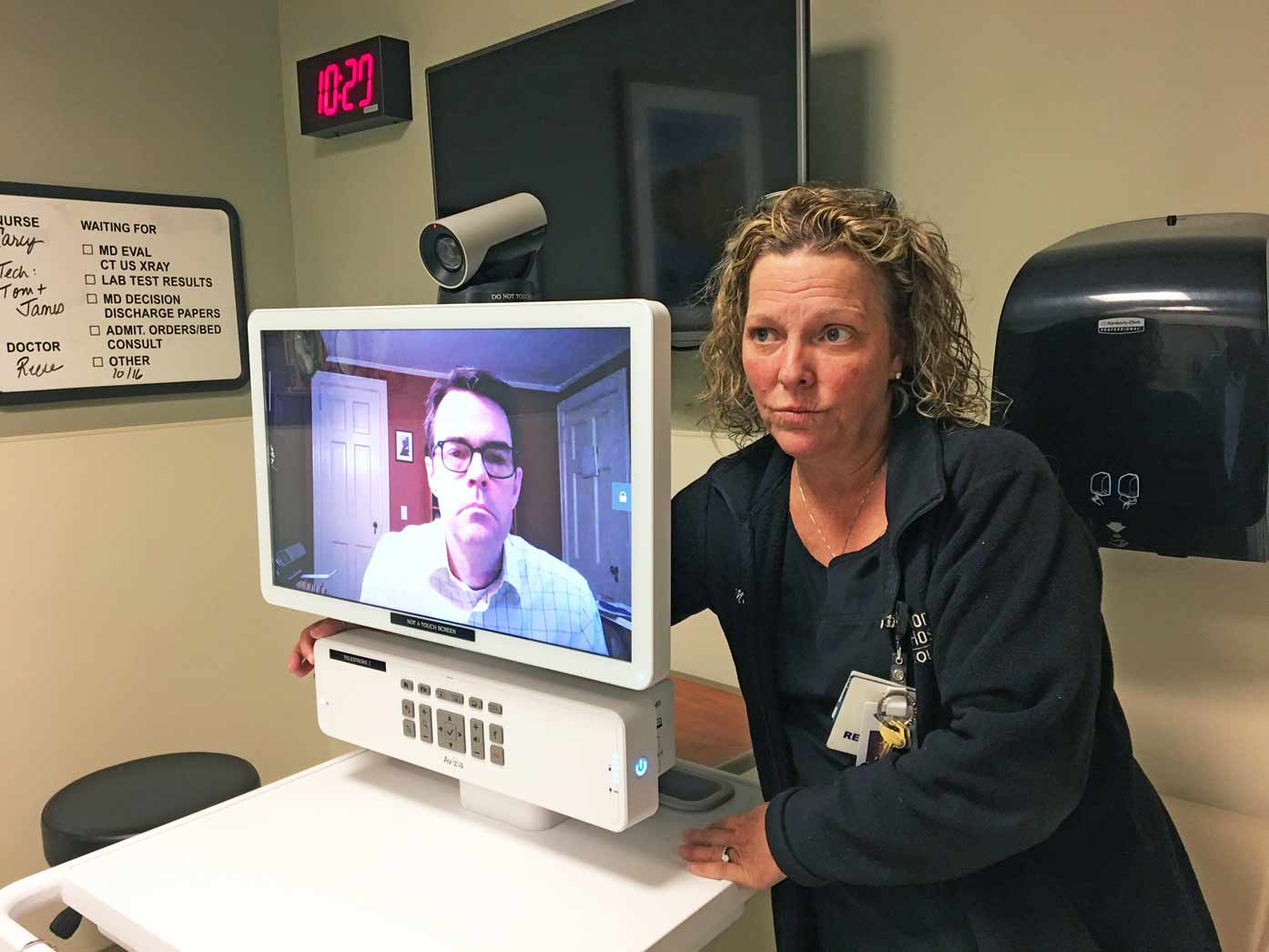Norwalk Hospital aims to cut treatment times with telestroke program

“Time lost is brain lost,” according to the American Stroke Association, and with good reason. A clot-busting medication known as tissue plasminogen activator (tPA) has been shown to be the most effective at limiting ischemic stroke damage the earlier it is given to the patient ”“ and can only be offered up to 4½ hours after the onset of stroke symptoms for eligible patients.
Norwalk Hospital has taken advantage of the rise in telemedicine and general technology by launching a telestroke program, which allows its six neurologists to remotely consult with emergency medicine clinicians to evaluate patients, rapidly diagnose stroke and order treatment.
While to date only 15 to 20 patients have been treated at Norwalk using the telestroke method ”“ given that neurologists are onsite during normal working hours ”“ Daryl Story, neurologist and director of the Acute Stroke Team at the facility, said the program has “definitely been saving time.
“Not only do you have the time it takes to accurately diagnose a patient,” Story said, “but when it comes to after hours, it can take a half hour or more for a neurologist to get to the hospital on I-95. This way we can work with the emergency department to start before we physically arrive.”
Traffic on I-95 was definitely a factor in introducing the program, agreed Michele Lecardo, stroke program coordinator and a nurse at Norwalk. “Depending on the time of day, it can take 20 minutes or an hour and 20 minutes to get here,” she said. “Then that 4½ hours doesn”™t seem like all that long.”
Stroke, the fifth leading cause of death in the nation, is a broad term that describes damage to the brain. A stroke can cause lasting brain damage, long-term disability, or death. An ischemic stroke ”“ which occurs in about 87% of stroke cases ”“ takes place when a blood clot blocks the oxygen-rich blood supply to the brain.
Under Norwalk”™s telestroke program, the emergency department doctor or nurse remote-connects the patient to the neurologist using a mobile telemedicine cart with audio and video capabilities. The neurologist can then speak with the patient while visually and physically (with the assistance of a bedside nurse) assessing them by controlling the camera remotely. The neurologist then determines whether tPA is an appropriate treatment and communicates this to the emergency room.
Depending on the case, the neurologist will still go to the hospital to examine and consult with the patient in-person. But the telestroke conference enables the neurologist to deliver a time-sensitive treatment much more quickly.
“It”™s basically a phone call,” Lecardo said. “The neurologist, from their home, can assess the patient”™s pupils and ask them to do certain tasks that, depending on their abilities, may indicate a stroke has taken place. Ultimately we can decrease the time it takes from diagnosis to (tPA) needle.”
Lecardo said there has been no negative feedback about the approach so far: “It”™s like having the neurologist in the room with you.”
“Best practices dictate that the neurologist be at the patient”™s bedside together with us,” said Dr. Benjamin Greenblatt, chair of emergency medicine at Norwalk. “This is really as good an equivalent as you can get.”
Greenblatt noted that the program is compliant with The Health Insurance Portability and Accountability Act, in that it does not store any audio or video related to the consultation.
“The other alternative is to try and do the consultation over the phone, which nowadays is an antiquated model,” he said.
Story underscored the importance of Norwalk”™s ability to team a patient with the same neurologist they “met” via the technology.
“Some hospitals have a similar program in place, but the neurologist may actually be located in another state,” he said. “You don”™t know what neurologist you”™re getting. Here we will see you the next morning, at the latest ”“ that sort of consistency can count for a lot.”
In addition, the Norwalk Hospital Stroke Program recently earned a Gold Plus Target Stroke Honor Roll Award from the American Heart Association. The facility earned the award by meeting specific quality measures for the diagnosis and treatment of stroke patients.
Those measures include evaluation of the proper use of medications and other stroke treatments, and evidence-based guidelines with the goal of speeding recovery and reducing death and disability for stroke patients.